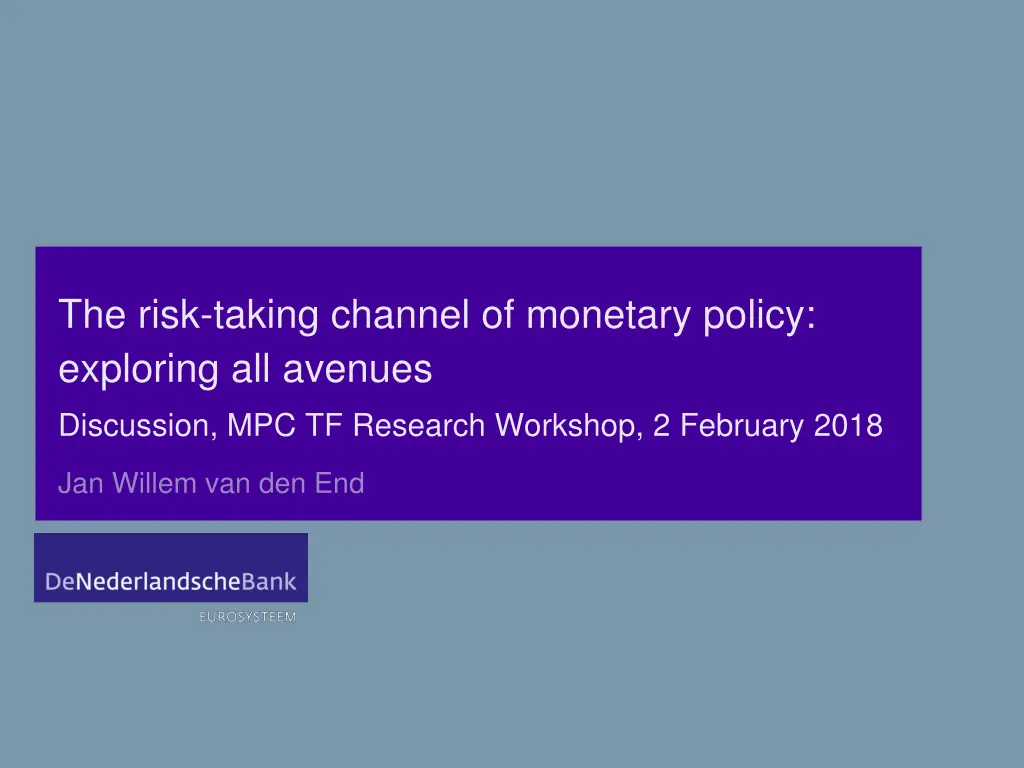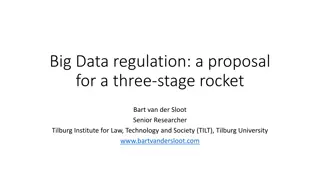
Exploring the Risk-taking Channel of Monetary Policy in Banking
Delve into the risk-taking channel of monetary policy, focusing on extensive margin outcomes for banks and the impact of liquidity buffers. Learn about the misallocation of resources through bank lending and the implications of different financial conditions post-crisis. Explore the dynamics of bank behavior and loan default likelihood in response to changing policy rates.
Download Presentation

Please find below an Image/Link to download the presentation.
The content on the website is provided AS IS for your information and personal use only. It may not be sold, licensed, or shared on other websites without obtaining consent from the author. If you encounter any issues during the download, it is possible that the publisher has removed the file from their server.
You are allowed to download the files provided on this website for personal or commercial use, subject to the condition that they are used lawfully. All files are the property of their respective owners.
The content on the website is provided AS IS for your information and personal use only. It may not be sold, licensed, or shared on other websites without obtaining consent from the author.
E N D
Presentation Transcript
The risk-taking channel of monetary policy: exploring all avenues Discussion, MPC TF Research Workshop, 2 February 2018 Jan Willem van den End
Contribution Panel regressions, covering multiple dimensions individual bank, borrower & loans characteristics ex-ante & ex-post credit quality (at origination & over time) intensive & extensive margin (existing & new loans) strengthen identification and nuance outcomes risk-taking only found at extensive margin most obvious for banks with low capital, high liquidity buffers
Sample period Sample period 1999-2007 because mon pol in this period was exogenous to PT economy and was a normal period entering EMU was shift from one equilibrium to another (not a normal period) financial conditions driven by sovereign risk spread (which is not exogenous to PT economy) different post-crisis state (ZLB, UMP, Basel 3, 3.5) o has affected bank behaviour o calls for caution wrt policy conclusions
Misallocation Risk-taking should be put in wider context that led to misallocation of resources capital flows, falling interest rates & risk spreads, fading FX risk, asset price boom affected bank behaviour Cette et al. (EER, 2016), Gopinath et al. (QJE, 2017) so its not only risk-taking by domestic banks, but a shift to another equilibrium, giving rise to misallocation
Misallocation through bank lending Suggestion: identify evergreening by looking at loans performing with forbearance Source: Andrews & Petroulakis (2017)
Liquidity buffers Finding that banks with high liquidity buffers more likely engage in risk-taking not in line with intuition liquidity buffers raise loan rates and lower lending (BCBS/MAG, 2010) Finding perhaps due for environment with strong search for yield, but cannot be generalized
Dif-in-dif Do loans granted when policy rates are low more likely default when rates increase? dif-in-dif Issue: comparability of treated & control group of loans doubtful whether very short window solves it likely that banks take into account changing rate expectations in lending behaviour, e.g. in non-price conditions o selection bias in loans granted in the two periods o suggestion: propensity score matching






















